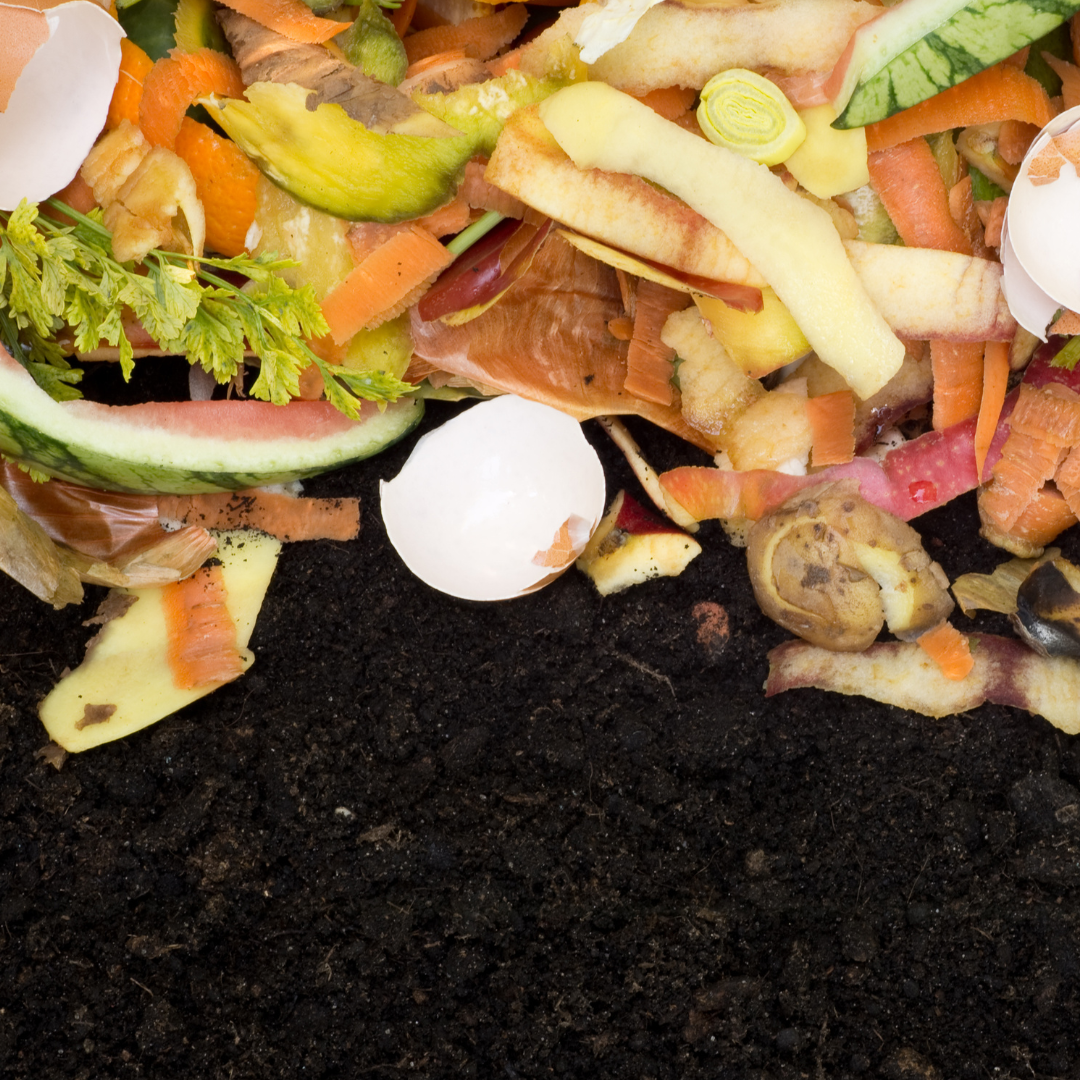What is Composting?
Composting is the natural process of recycling organic matter, such as leaves and food scraps, into a valuable fertilizer that can enrich soil and plants. Anything that grows decomposes eventually; composting simply speeds up the process by providing an ideal environment for bacteria, fungi, and other decomposing organisms (such as worms, sowbugs, and nematodes) to do their work. The resulting decomposed matter, which often ends up looking like fertile garden soil, is called compost. Fondly referred to by farmers as “black gold,” compost is rich in nutrients and can be used for gardening, horticulture, and agriculture.[1]
Building Your Compost Pile:
- Choose whether you want to have an open pile or use a commercial compost bin.
- Gather carbon and nitrogen materials first. The ratio should be 2/3 carbon, 1/3 nitrogen by volume. Ideally, a pile should be around 3′ x 3′ x 3′.
- Carbon (browns) include cardboard (not shiny), paper towel and toilet paper rolls, wool, cotton, vacuum cleaner sweepings, dryer lint, coffee filters, stalks from perennial plants, end of season annual plants, branches, dry leaves, egg cartons made from paper, straw
- Nitrogen (greens) include fruit or vegetable peels and cores (no need to remove seeds), coffee grounds, all non-meat food scraps, pet or human hair, manure from herbivores (plant-eaters only please), seasonal thinnings from the vegetable or flower garden.
- To start your pile, add a 4-6″ layer of chopped, mixed carbon. Then add a 2-3″ layer of chopped nitrogen. Add one handful of garden soil. Mix carbon and nitrogen layers with a garden fork and water until pile feels as wet as a wrung-out sponge. Continue adding layers of carbon and nitrogen material, watering and mixing as described above, until the pile reaches at least 3′ in height, and cover pile with a sheet of black plastic, held down with rocks.
- Never put bones, dairy, meat, fat, or any plant treated with pesticides, showing disease or insect infestation into your pile. Weeds that have mature seed heads are also best kept out of the compost pile.


Best Practices to Maintain Your Compost Pile:
Your compost pile should be turned once a week, rotating materials from top to bottom. This is a guideline, not a strict rule.
- Add water if the pile doesn’t feel like a wrung-out sponge.
- Add chopped food scraps to the middle of the pile, covering them with some of the carbon material.
- Assess the pile each week; tweak levels of ingredients, water, and air.
Common Issues:
- It Smells: The pile is too wet or has too much in the way of nitrogenous materials. Pull it apart for a while or add carbon items like cardboard/paper, dry leaves, or mowed straw.
- It’s Not Decomposing: The pile is not wet enough. Add water. Activators such as fish emulsion and seaweed can also be added.
- It’s Attracting Animals: Bury food scraps and turn pile more often.
How To Know When It’s Ready:
The compost is finished when:
- It looks like dark brown potting soil.
- The contents are not recognizable.
- Pile is reduced to about half its original size.
Let it sit untouched, under plastic for two months before using. If your goal is to continue composting all of your kitchen and yard scraps, you will now begin composting in another location. Learn more about 3-bin systems.
How to Use Your ‘Black Gold’
When ready to use, dig a couple of handfuls of mature compost into the top 4” of soil for plants. Compost can also be applied lightly as a top-dressing several times a season around all actively growing plants. Compost is extremely rich in nutrients and should only compose 25% of potting soil.
Keep In Mind:
Remember that composting happens naturally, and we are just aiding the process to speed it up. Don’t stress about getting it exactly right. There are only five ingredients in compost- carbon, nitrogen, water, air and time. Sort of like making a cake, if you use the right ingredients you can mess it up a little and still get a cake. You will learn as you go what works best for your pile. Have fun, know you’re doing the earth a great favor, and get ready for a beautiful, healthy garden!

